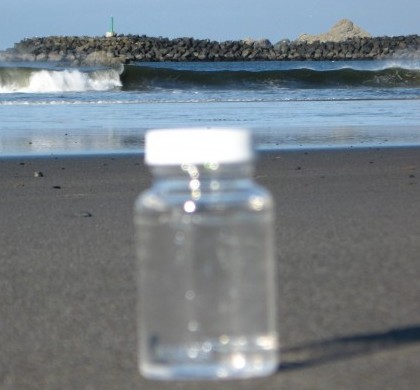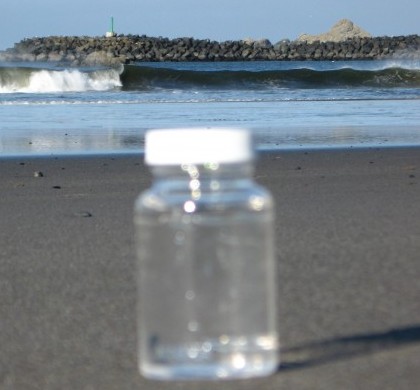
The Oregon Beach Monitoring Program (OBMP) and Department of Environmental Quality (DEQ) have scheduled a series of public meetings this week on the coast and next week in Portland to discuss adoption of a new, lower beach action value (BAV) and corresponding water quality criteria that will be used as the basis for public health advisories at Oregon beaches. The change comes from new EPA health criteria that Oregon is either required to adopt or provide a defensible alternative criteria. We've written a bit on these new advisory levels and the upcoming meetings, but questions still remain from coastal recreational users - will this really better protect public health and more importantly, what can be done to move towards solutions beyond "advisories" of the decline of our beach water quality?
The OBMP was implemented to protect the public's health for those recreating on Oregon's beaches and within coastal waters. The program utilizes DEQ staff to execute water quality monitoring and OBMP programmatically implements an advisory system for notifying the public when beach water quality is above recommended health limits for recreational contact. The meetings this week and next will be "informational" to discuss how the advisory limit or "beach action value", measured in bacteria, will be cut by over half - from 158 to 70 MPN. While we think the change will ultimately end up in more advisories being issued, we don't think that it will have much benefit to public health and certainly won't begin addressing pollution at it's source. Moreover, as these new standards are playing out nationally, they're likely to cause much confusion between coastal states that may choose to define their own criteria.
Better addressing public health on our beaches and sources of pollution is going to have to come through DEQ, not the Oregon Beach Monitoring Program. The source pollution water that contaminates most of our beaches and bares the majority of risk are freshwater creeks and outfalls that are outside the authority of OBMP, which can only issue public advisories for saltwater. That's a HUGE gap for an advisory program that is supposed to notify the public of health risks with recreational water contact, especially given the high use of activity by beach-goers (particularly young children) in beach areas with creeks and tributaries. Even though OBMP monitors these waters and provides results to stakeholders, they don't issue an advisory, simply based on their limited authority.
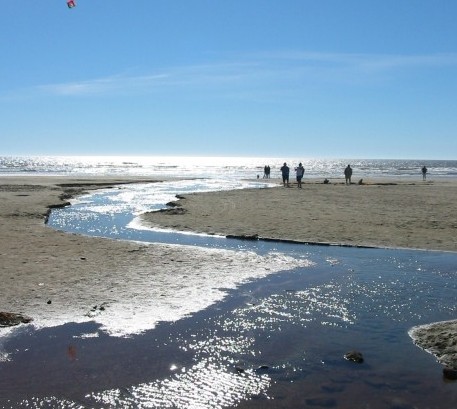 Freshwater creeks such as this one are often the most popular places for children to recreate on beaches
Freshwater creeks such as this one are often the most popular places for children to recreate on beaches
Now we think that's just crazy if we're trying to protect public health. Under our current system, water flowing across a popular beach can have upwards of 100 times the health advisory limit, or "beach action value", but simply because it is freshwater and not saltwater, no public advisory will be issued. At the same time, the ocean nearby could be sampled and measured below the health advisory limit and no one on the beach around the creek is the wiser, because the saltwater measured ok...nevermind the 30 kids playing in the creek on the beach that day. The graph below, courtesy DEQ and OBMP, shows the number of health criteria exceedences for both marine and freshwater samples from 2010-2015 monitoring seasons (under both the new and old health criteria). Remember, no advisories were issued for the freshwater sites, which pretty much are double in health advisory level incidences across the board. As a state, we're actually monitoring the dirtiest water with the greatest risk for public health contact on our beaches, but not issuing advisories to the public...and no, it doesn't make sense to us either.
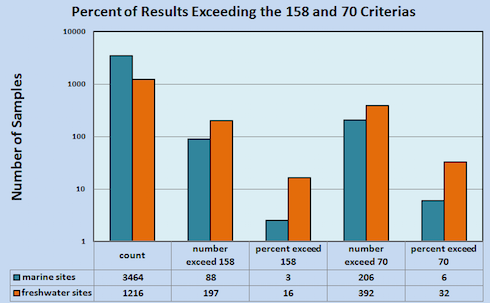 2010-2015 OBMP Monitoring Stats Exceeding Health Advisory Levels For Coastal Fresh and Marine Waters
2010-2015 OBMP Monitoring Stats Exceeding Health Advisory Levels For Coastal Fresh and Marine Waters
DEQ simply doesn't have a program to notify the public of freshwater health advisories of this kind. They do for shellfish and harmful algal blooms, but not so for fecal coliform and water quality contact! We think they should extend this authority to the OBMP or another entity that can carry out notification for what we're already measuring...and, there just may be an opportunity to start working on this with the agency.
Concurrently with the OBMP informational meetings this week, DEQ will be providing information on their rule-making process, set to start next year, to revise bacteria criteria for coastal recreational waters. According to DEQ's website, they are updating rules to revise Oregon’s water quality standards for bacteria to protect people who recreate in coastal waters. Exposure to high levels of bacteria from swimming and other full immersion water contact recreation is associated with increased gastrointestinal illness.
We think protecting the public health begins with advising them of the problem and then working on management solutions. We already know the management takes a painfully inadequate amount of time to truly "protect people who recreate in coastal waters". This happens through decade long processes involving 303d listings and TMDL management plans that may or may not ever have enough teeth to solve the pollution issues. If we really want to address public health, then an advisory system for these polluted freshwater sites should be at the forefront of our concern. Sitting idly and not issuing advisories, while thousands unknowingly expose themselves to risks, is just plain silly.
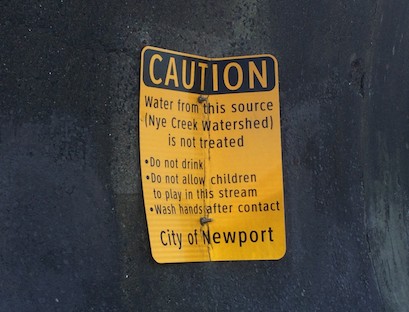 With no state advisory system for freshwater, Surfrider has worked with cities to help post cautionary signs for freshwater creeks and outfalls that continually have high bacteria
With no state advisory system for freshwater, Surfrider has worked with cities to help post cautionary signs for freshwater creeks and outfalls that continually have high bacteria
So what can we do? Well, Surfrider has been picking up the seasonal and spatial monitoring gaps for years in Oregon through our Blue Water Task Force Program. Further, our chapters' have worked extensively partnering at the local level to source and notify the public of local issues, even without the state's assistance. But for us to make changes in the state's program, we're going to need to engage in this rule-making process to help better address criteria and standards that may trigger advisories. For the upcoming informational meetings, it's a great opportunity to let DEQ and OBMP know your interests, so that we move into next year's rulemaking process with some momentum for addressing concerns. A few things to consider if you're attending any of these upcoming meetings:
- Let OBMP know that the program is important and valuable to you! As a recreational user, water quality is of the utmost importance and Surfrider has been fighting at the federal level to support continued funding for this program - more info on that here.
- Share with OBMP which beaches you would like to see monitored on a regular basis.
- Ask OBMP if they or DEQ would consider alternative testing methods for more rapid testing for improved notification and source id indicators for tracking pollution. Here's a great article covering some of the alternative testing methods.
- Ask DEQ why there is no advisory system for contaminated freshwater on our beaches despite the fact that we monitor these areas. Let them know you are interested in these sources being tested and are concerned about these areas where the pubic is likely at more risk than in the ocean.
- DEQ plans to adopt likely a single E. coli criteria for freshwater while the EPA recommends multiple different criteria, including Enterococcus. Ask DEQ why they would limit themselves to a single criteria, especially given that OBMP are already monitoring freshwater on beaches now for Enterococcus and a wealth of data already exists for this. You can read EPA's guidance on this for citation here.

